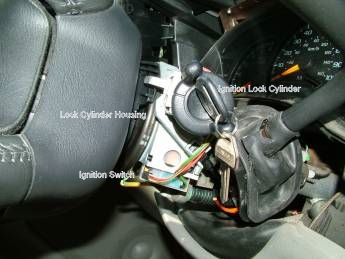Introduction
Experiencing a Chevy truck that won’t start or stalls unexpectedly can be frustrating. Many drivers face Chevy truck ignition switch problems, which affect starting, electrical components, and overall reliability. Understanding the causes, symptoms, and solutions helps you avoid costly repairs and downtime while keeping your truck running safely.

What Is an Ignition Switch and Why It Matters
The ignition switch is a small but vital component that controls:
- Electrical power to the vehicle
- Starter motor activation
- Accessories such as lights, radio, and climate control
A faulty switch can prevent the truck from starting or cause intermittent electrical failures. According to automotive studies, ignition-related failures account for 15–20% of truck starting issues in vehicles over 10 years old.
Read too: Franklin Truck Parts Near Me: Your Complete Guide to Local Truck Parts & Repair Solutions
Common Chevy Truck Ignition Switch Problems
- Truck Won’t Start
- Turning the key results in no response from the starter or dashboard lights.
- Intermittent Electrical Issues
- Accessories or dashboard lights flicker when the key is in the “ON” position.
- Stalling While Driving
- Engine shuts off unexpectedly due to loss of ignition signal.
- Key Stuck or Hard to Turn
- Worn tumblers or mechanical failure prevents smooth operation.
- Starter Remains Engaged
- Continuous starter activation can damage the motor or flywheel.
Causes of Ignition Switch Problems
- Wear and Tear: Over time, internal contacts can wear out.
- Electrical Faults: Corrosion or loose wiring may prevent proper operation.
- Mechanical Damage: Broken key or tumbler misalignment can obstruct turning.
- Aftermarket Modifications: Non-OEM parts sometimes interfere with proper switch function.
How to Diagnose Chevy Truck Ignition Switch Problems
- Visual Inspection:
- Check for corrosion, broken wires, or visible damage around the ignition cylinder.
- Electrical Testing:
- Use a multimeter to verify voltage continuity at different key positions.
- Starter Relay Check:
- Ensure the relay engages when the key is turned to “START.”
- Accessory Test:
- Turn key to “ON” and verify all electrical components receive power.
Step-by-Step Repair Guide
- Disconnect the Battery:
Safety first! Remove the negative terminal to prevent electrical shock. - Remove the Steering Column Covers:
Use a screwdriver to access the ignition switch and related wiring. - Disconnect Wiring Harness:
Carefully unplug connectors to avoid damaging pins. - Remove the Old Ignition Switch:
Unscrew mounting screws and slide out the switch assembly. - Install New Ignition Switch:
Align properly and secure with screws. Connect the wiring harness. - Test Operation:
- Reconnect battery
- Turn key through all positions: OFF, ACC, ON, START
- Verify the truck starts and electrical accessories function
- Reassemble Covers:
Replace steering column covers and ensure no wires are pinched.
Advantages vs Disadvantages
| Advantage | Disadvantage |
|---|---|
| Restores reliable starting | Requires partial disassembly |
| Fixes intermittent electrical issues | New parts may be costly |
| Prevents stalling | DIY requires basic tools and safety precautions |
| Compatible with OEM parts | Improper installation can cause damage |
FAQ
Q1: How do I know if the ignition switch is bad?
A: Symptoms include failure to start, flickering dashboard lights, stalling, or key getting stuck.
Q2: Can I drive with a faulty ignition switch?
A: It is unsafe. A failing switch may cause the engine to stall unexpectedly.
Q3: How long does it take to replace an ignition switch?
A: For most Chevy trucks, DIY replacement takes 30–60 minutes with basic tools.
Q4: Are aftermarket switches reliable?
A: OEM parts are recommended. Aftermarket switches may work but could cause future electrical issues.
Q5: Can a worn key cause ignition problems?
A: Yes, a worn or bent key can prevent smooth operation and damage the switch over time.
Q6: How often should I inspect the ignition system?
A: Inspect every 12–18 months or at the first sign of electrical or starting issues.
Conclusion
Understanding and addressing Chevy truck ignition switch problems is essential for vehicle safety and reliability. Regular inspection, timely repair, and using quality parts help prevent stalling, starting failures, and electrical issues. By following this guide, you can diagnose, repair, and maintain your ignition system efficiently.
Share this article on Facebook, Twitter, or LinkedIn to help friends and fellow Chevy owners troubleshoot their ignition issues safely!
Leave a Reply